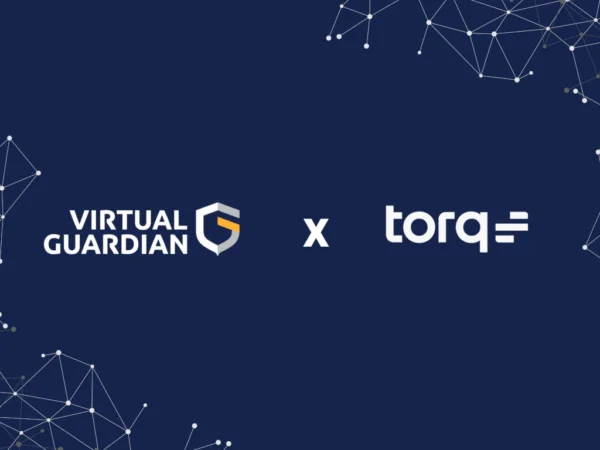The digital landscape is rapidly evolving, and Artificial Intelligence (AI) is at the forefront of this transformation. AI tools are transforming workplaces across industries, automating tasks, streamlining processes, and boosting efficiency. However, with this growing reliance on AI comes a crucial question: How will the use of AI by bad actors increase threat opportunities to your organization? Understanding the cybersecurity threats associated with AI is essential for organizations to navigate the future of work securely.
The Rise of AI in the Workplace
Organizations are increasingly adopting AI solutions to gain a competitive edge, improve decision-making, and enhance employee productivity. Here are some specific examples of how AI is being used in different industries:
- Manufacturing: AI-powered robots are revolutionizing assembly lines, performing tasks with greater precision and speed than human workers. AI can also optimize production processes, minimize waste, and predict equipment failures.
- Healthcare: AI algorithms can analyze medical images to detect diseases at earlier stages, personalize treatment plans, and even assist surgeons during complex procedures.
- Finance: AI-powered tools are used for fraud detection, risk management, and algorithmic trading. These tools can analyze vast amounts of financial data to identify suspicious activity and make informed investment decisions.
- Retail: AI personalizes the shopping experience for customers, recommending products based on past purchases and browsing behavior. AI can also optimize inventory management and predict demand fluctuations.
AI as a Target: Exploitable Vulnerabilities
AI systems are not foolproof. They rely on data for training and operation, and any weakness in data security or the underlying algorithms can leave them susceptible to manipulation. Here’s a deeper dive into the exploitable vulnerabilities:
- Data Poisoning: Malicious actors can inject poisoned data into AI systems during the training phase. This poisoned data can skew the AI’s decision-making process, leading it to make incorrect predictions or even launch attacks itself. For example, an AI system trained to identify spam emails could be tricked into flagging legitimate emails as spam, hindering communication and productivity.
- Adversarial Attacks: These attacks involve manipulating the input data fed to an AI system in a way that causes it to produce a desired outcome for the attacker. For instance, hackers could manipulate images in a way that an AI-powered facial recognition system grants unauthorized access to a secure facility.
- AI Phishing and Social Engineering: AI can be used to create highly targeted and personalized phishing attacks. Hackers can develop AI-powered chatbots that mimic human interaction to trick employees into revealing sensitive information or clicking on malicious links that compromise the organization’s security.
These vulnerabilities highlight the importance of robust cybersecurity measures specifically designed to protect AI-powered systems.
Real-World Examples of AI-Powered Attacks
Recent incidents demonstrate the growing threat of AI-powered attacks:
- Deepfakes for Disinformation: Malicious actors have used AI to create deepfakes, which are highly realistic video forgeries, to impersonate company executives and spread false information that could manipulate stock prices or damage the organization’s reputation.
- AI-powered Spam Campaigns: Hackers have developed AI tools to automate phishing campaigns, making them more targeted and difficult to detect. These AI tools can personalize phishing emails using stolen data, increasing the likelihood that employees will fall prey to the scam and compromise sensitive data or systems.
- AI-assisted Malware Development: AI algorithms can be used to automate the process of creating and deploying malware. This can lead to the creation of more sophisticated malware that is more difficult to detect and remove.
These examples showcase the potential for AI to be weaponized and highlight the evolving nature of cyber threats.
Mitigating the Risks: Securing Your AI-Powered Workplace
Fortunately, there are steps organizations can take to mitigate the cybersecurity risks associated with AI:
- Implement Data Security Best Practices: Strong data security practices are essential for protecting the data used to train and operate AI systems. This includes:
- Encryption of data at rest and in transit
- Access controls to limit who can access sensitive data
- Regular monitoring of data security systems for suspicious activity
- Educating Employees on AI Security Risks: Employees are a critical line of defense against cyberattacks. Organizations should provide training to employees on how to identify and avoid AI-related phishing attempts and social engineering tactics. Employees should also be aware of the potential for bias in AI systems and how to report any concerns.
- Continuously Monitor AI Systems: AI systems should be continuously monitored for anomalies and suspicious activity. This can help to identify potential security breaches or attempts to manipulate the AI model.
- Embrace a Culture of Security: Building a culture of security within an organization is essential for mitigating cybersecurity risks. This involves promoting security awareness among all employees and encouraging them to report any suspicious activity.
- Stay Informed About AI Security Threats: The cybersecurity landscape is constantly evolving, and new threats to AI systems are emerging all the time. Organizations should stay informed about the latest threats and vulnerabilities and update their security measures accordingly.
By following these best practices, organizations can harness the power of AI while safeguarding themselves from cyberattacks.
The Future of AI and Cybersecurity
AI is a powerful tool that can present a variety of benefits to organizations looking to increase their productivity and innovation. However, it’s crucial to acknowledge and address the cybersecurity risks associated with this technology. By implementing robust security measures and fostering a culture of security awareness, organizations can ensure that AI is used safely and ethically.
Interested in learning more about how your organization can bolster your cybersecurity surrounding AI? Connect with us here or at +1 -800-401-TECH (8324) to get in touch.


